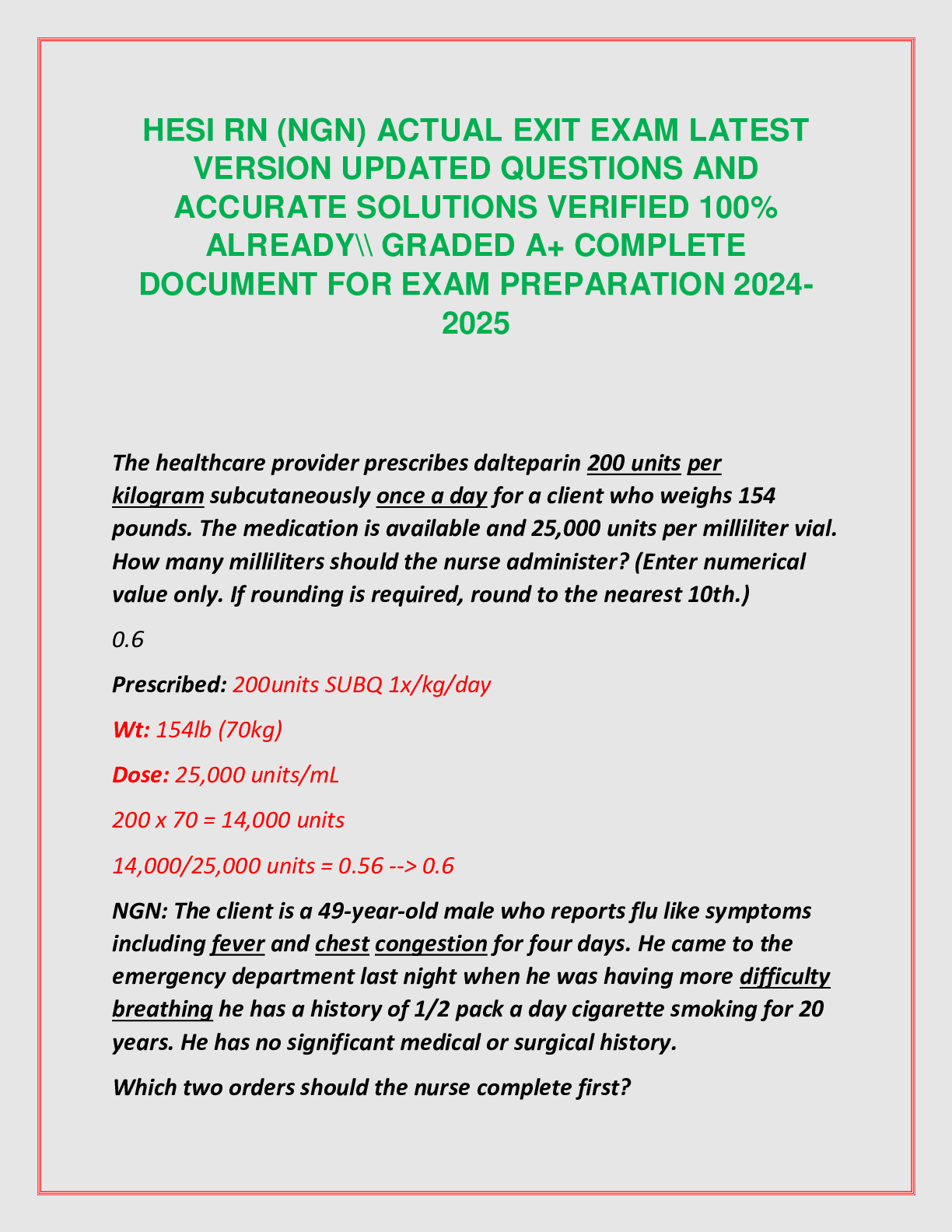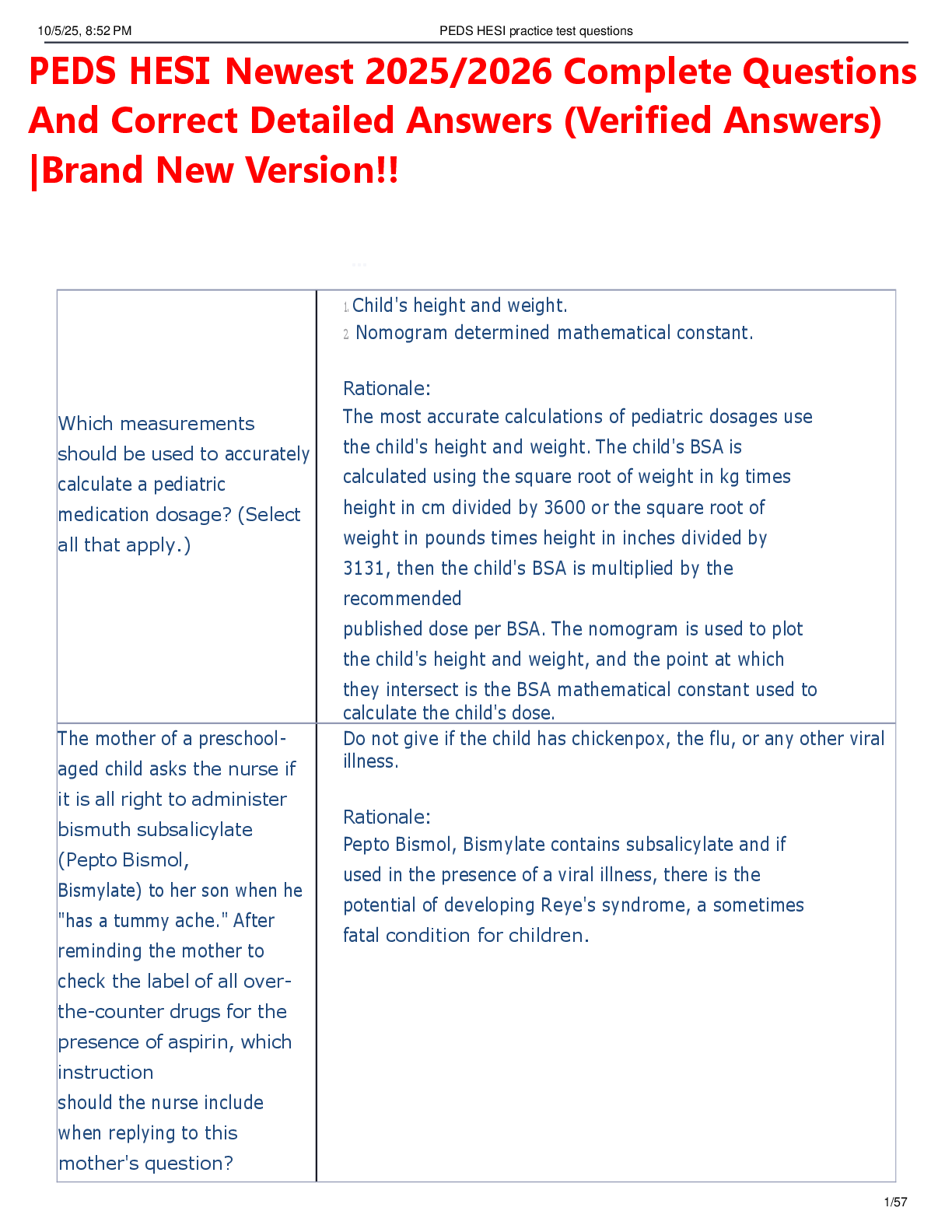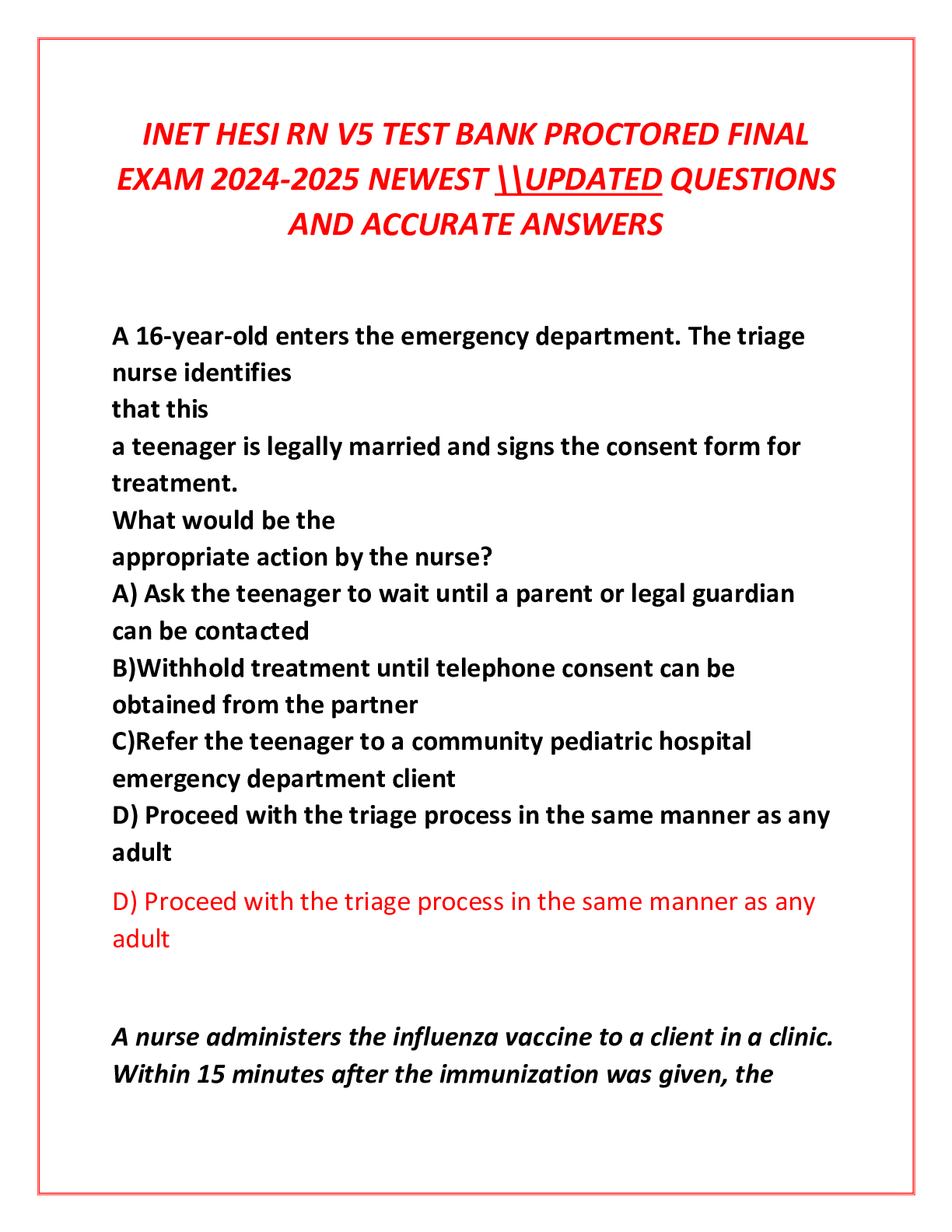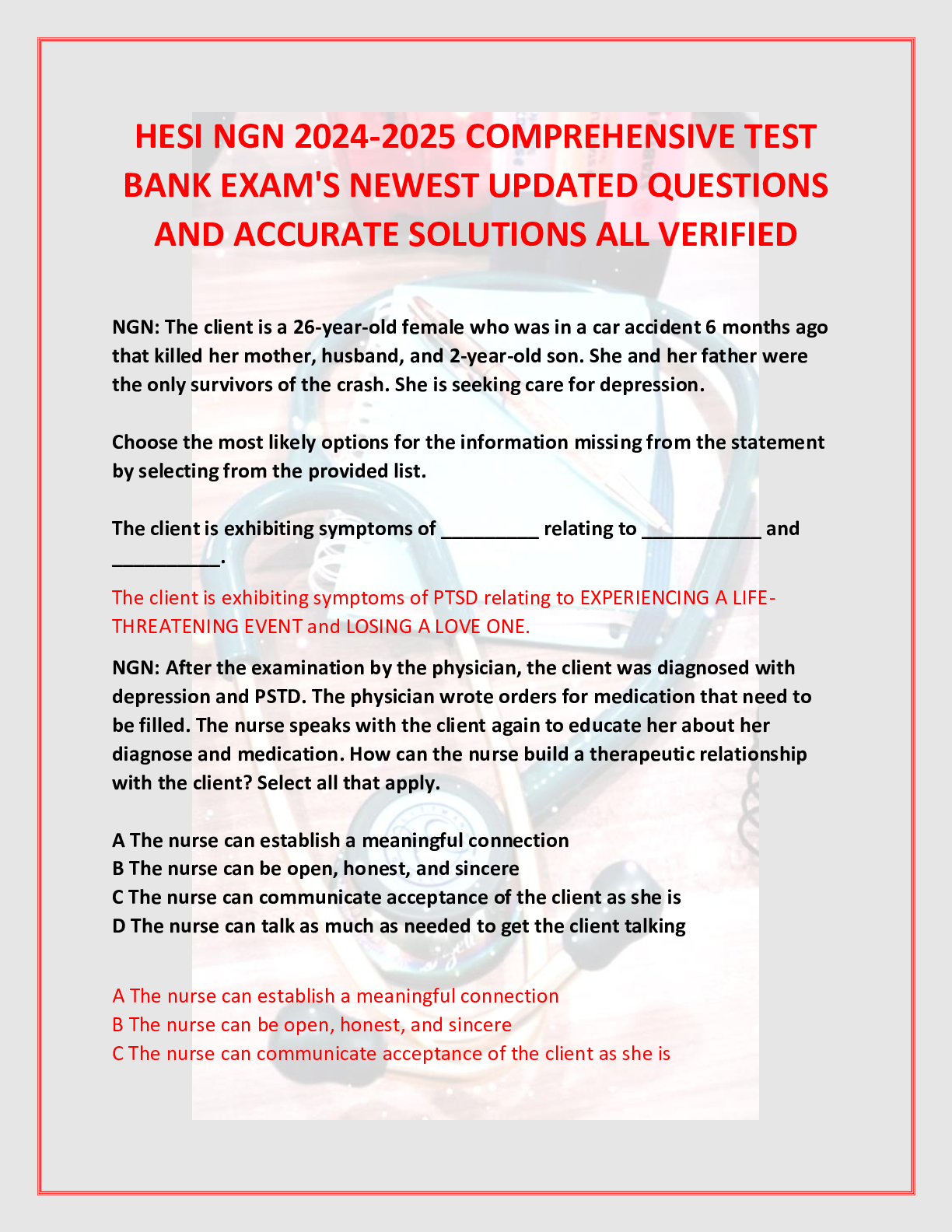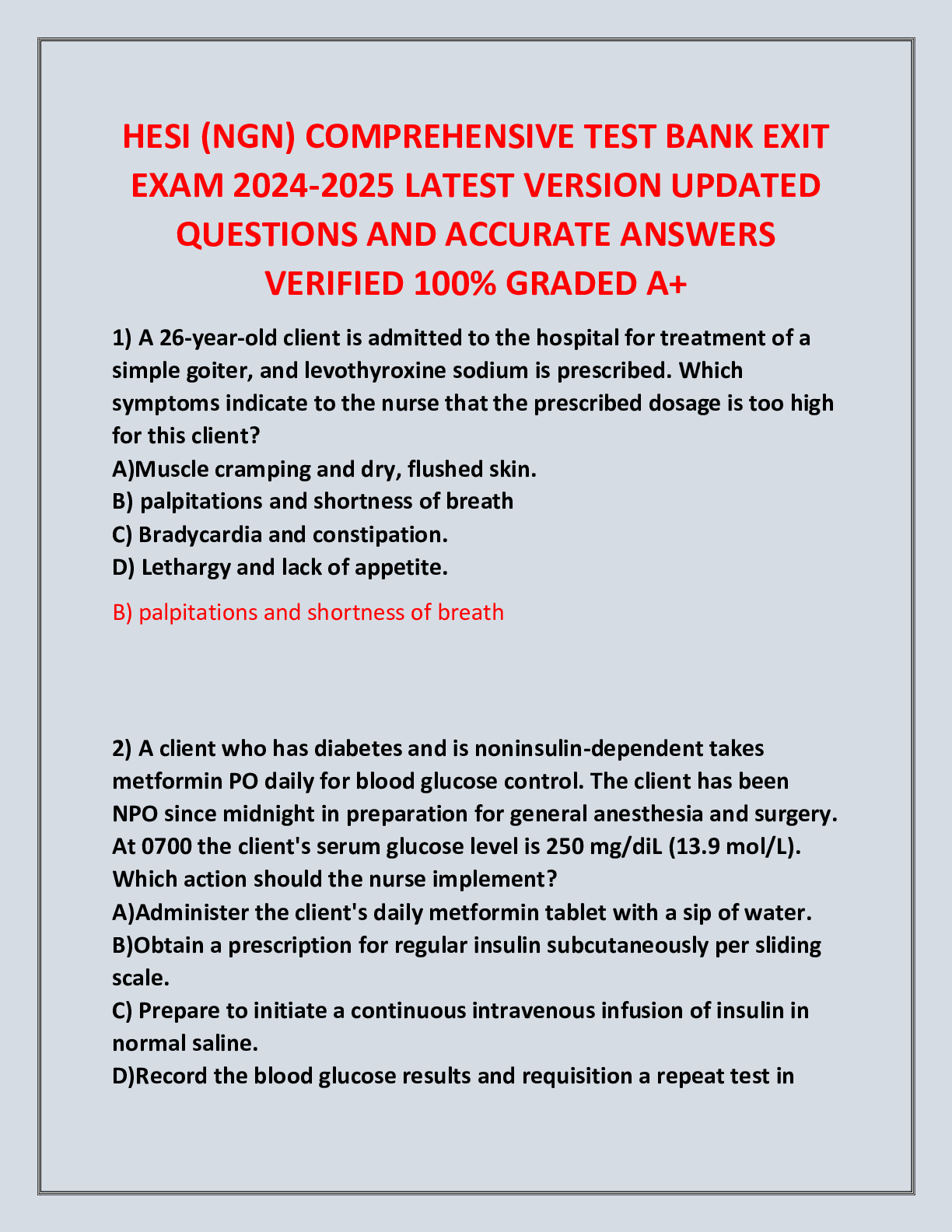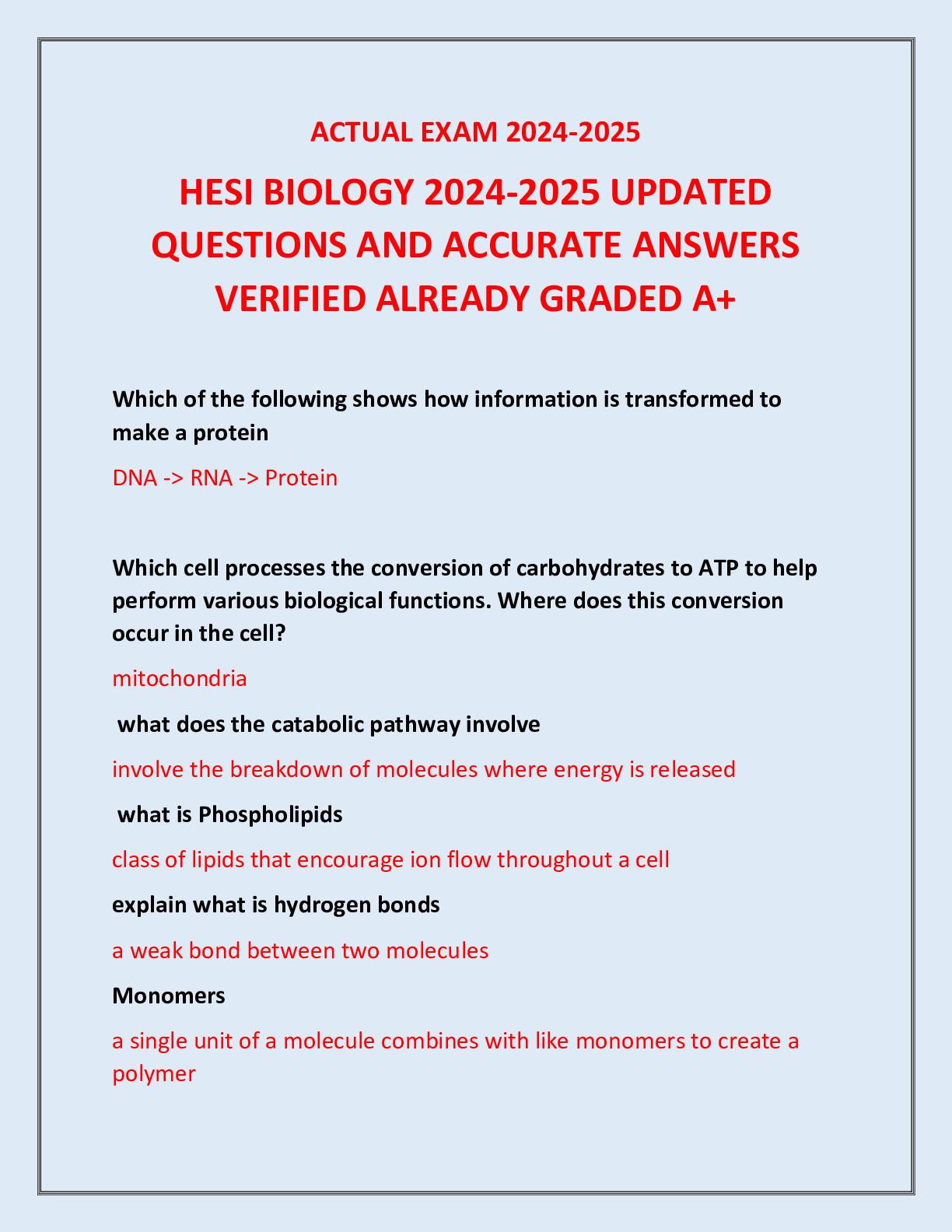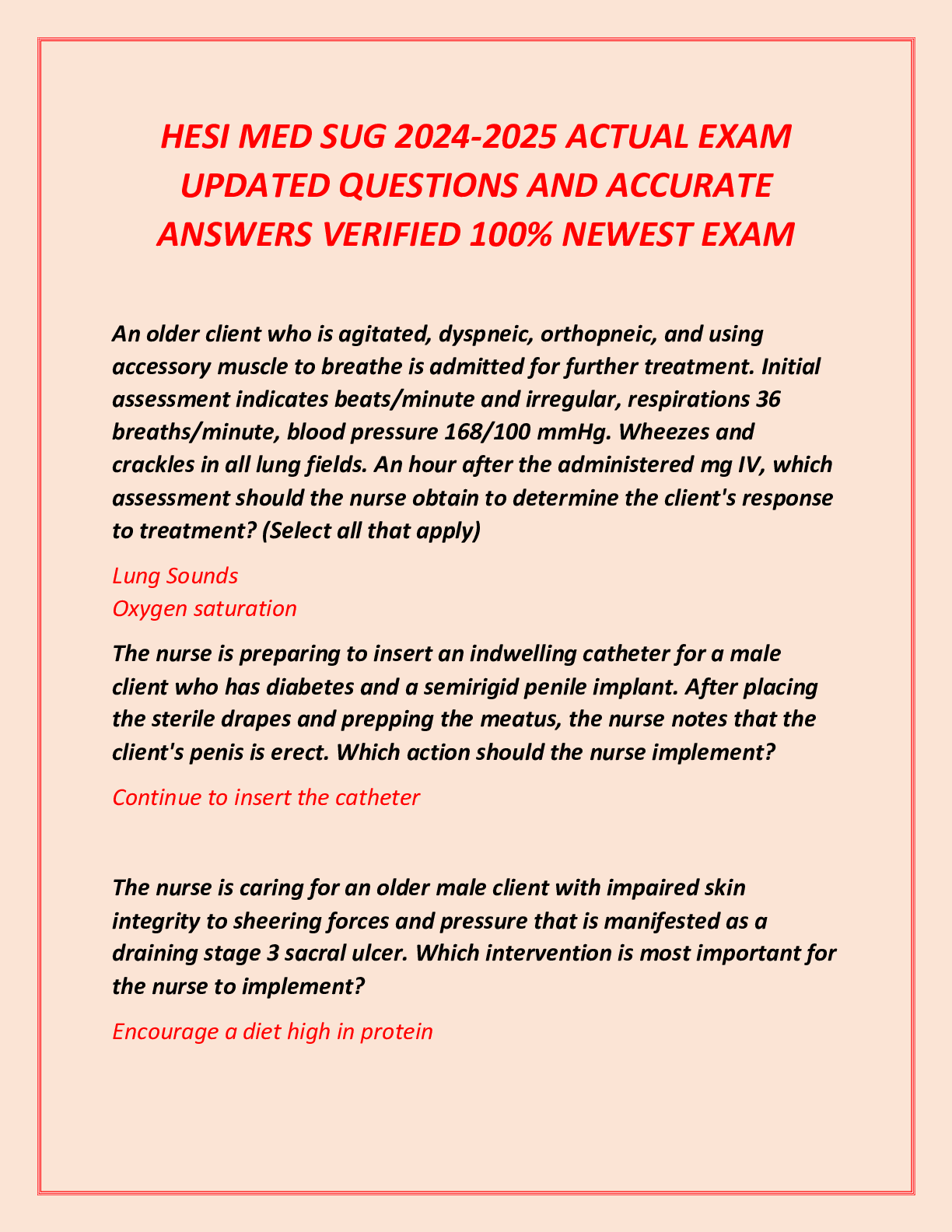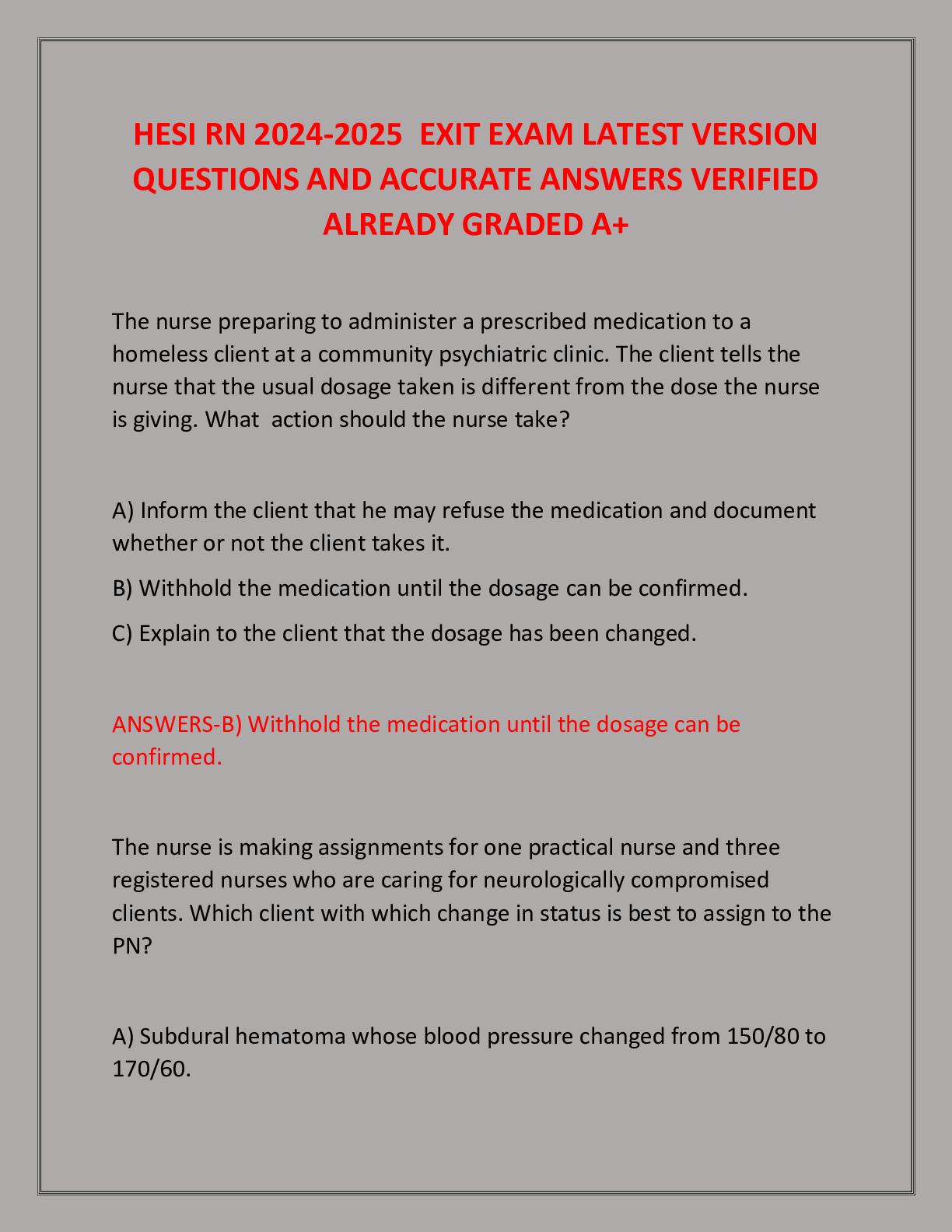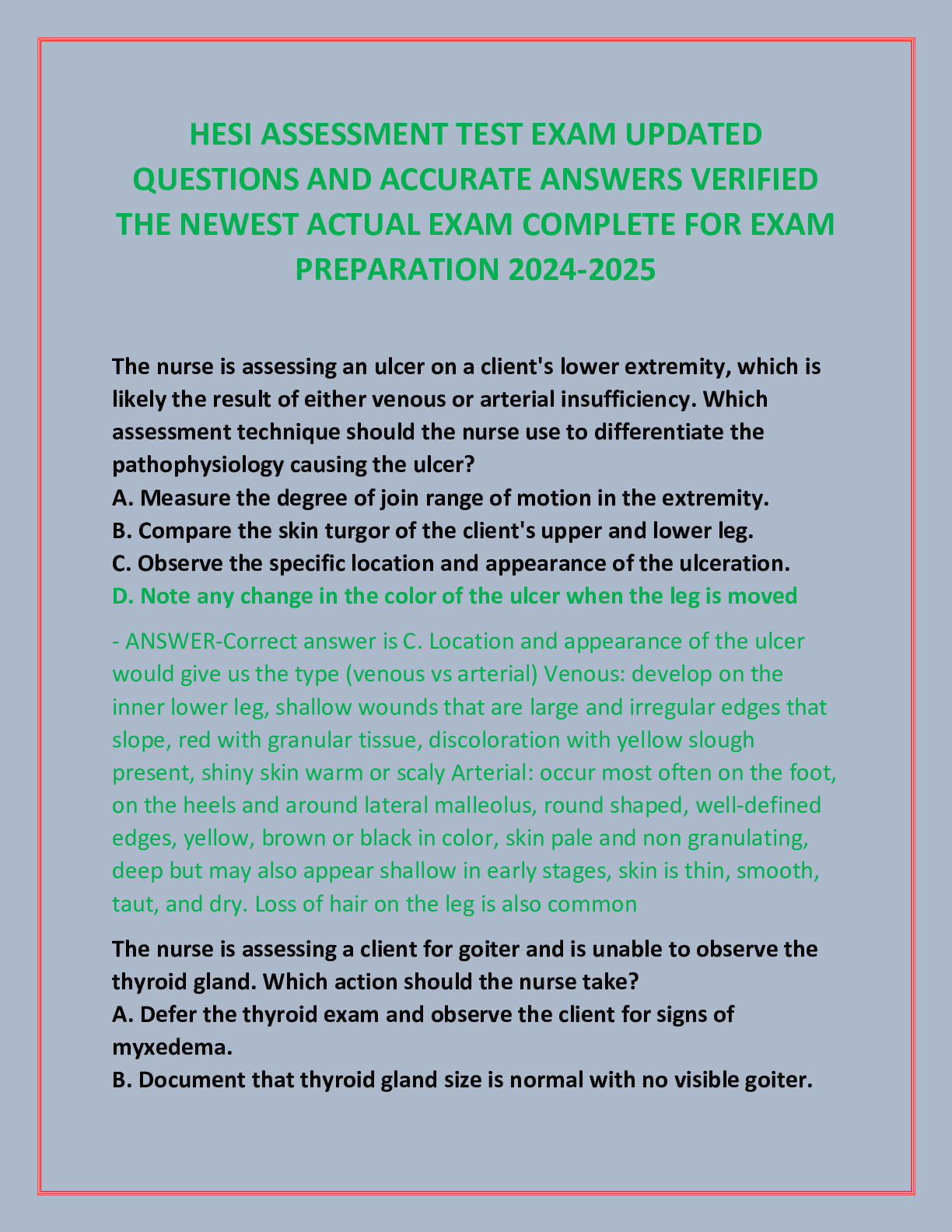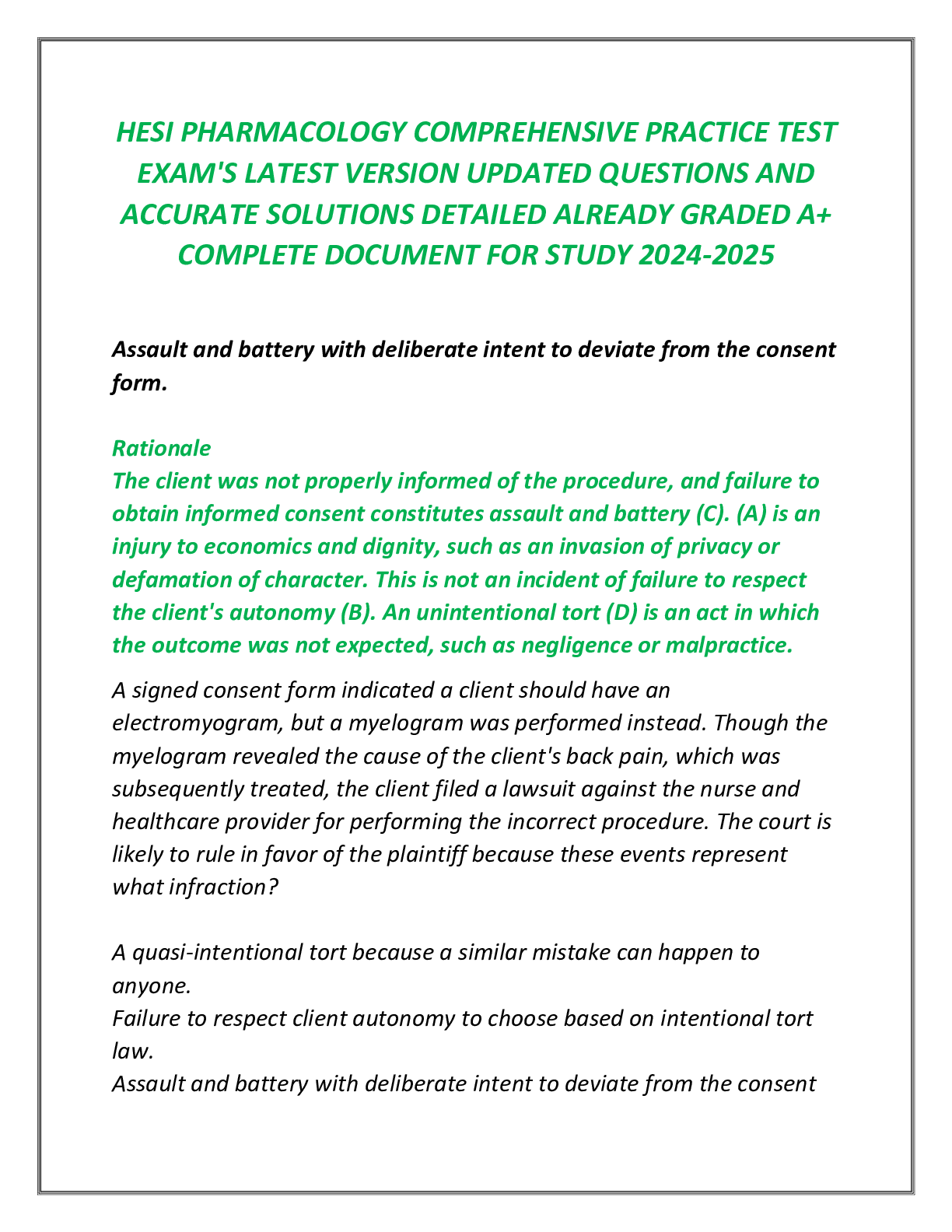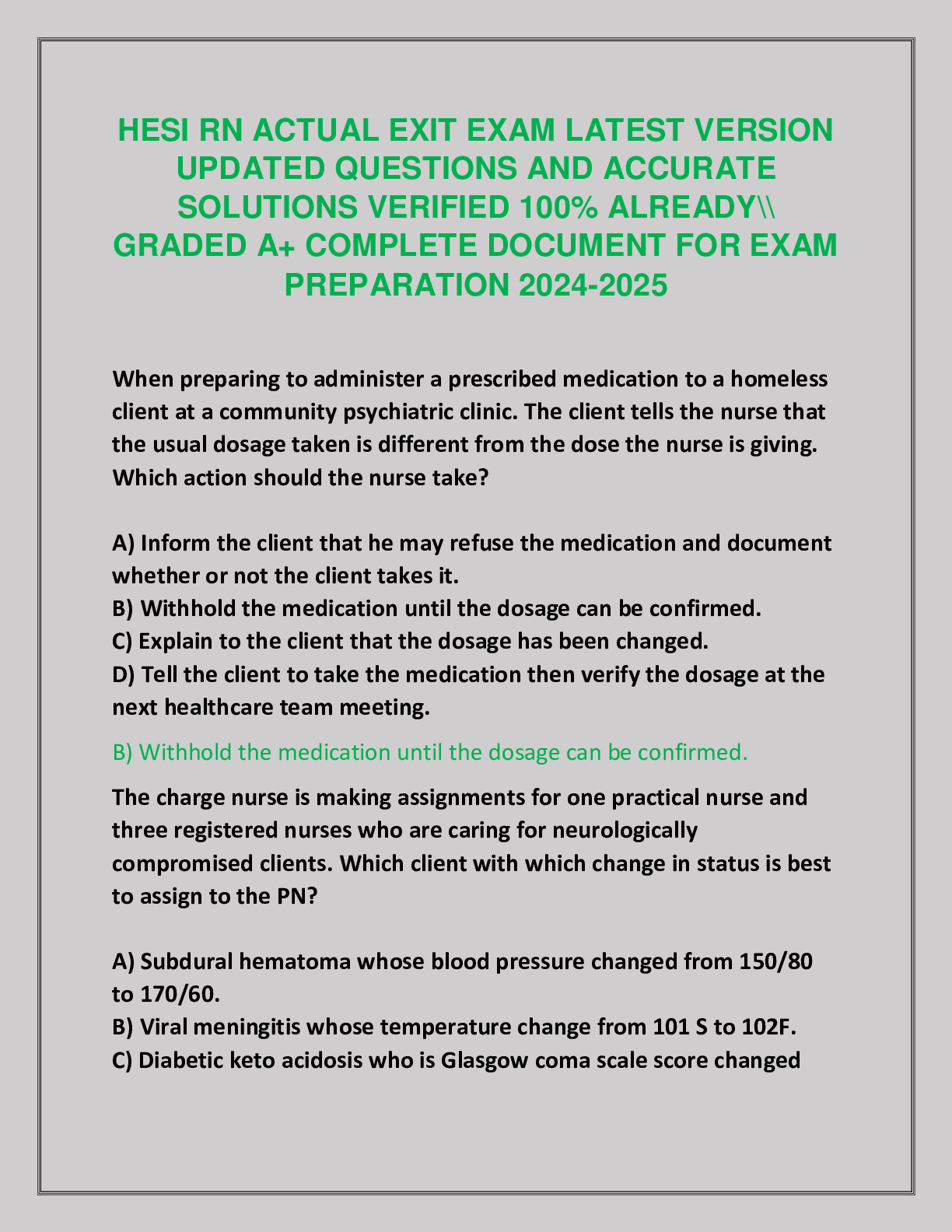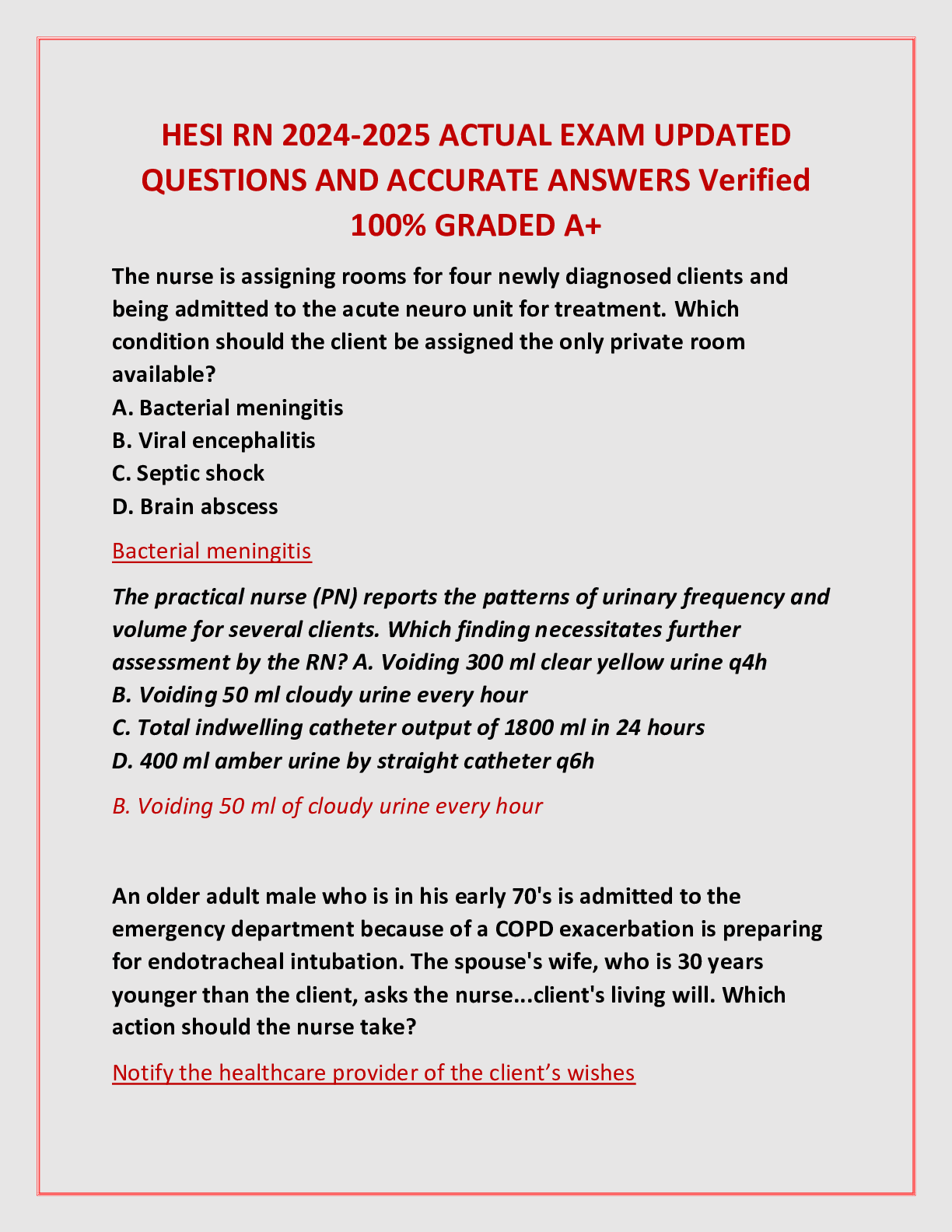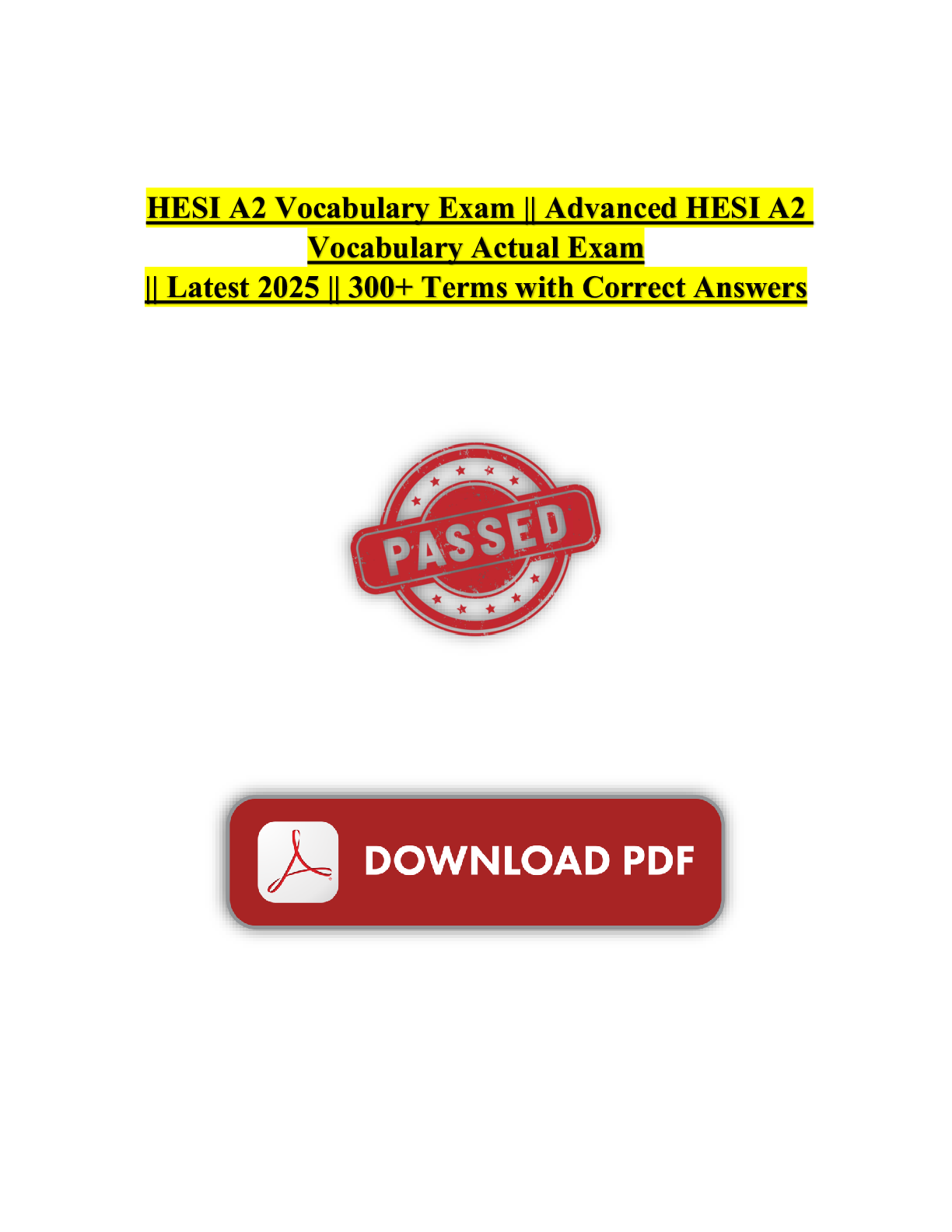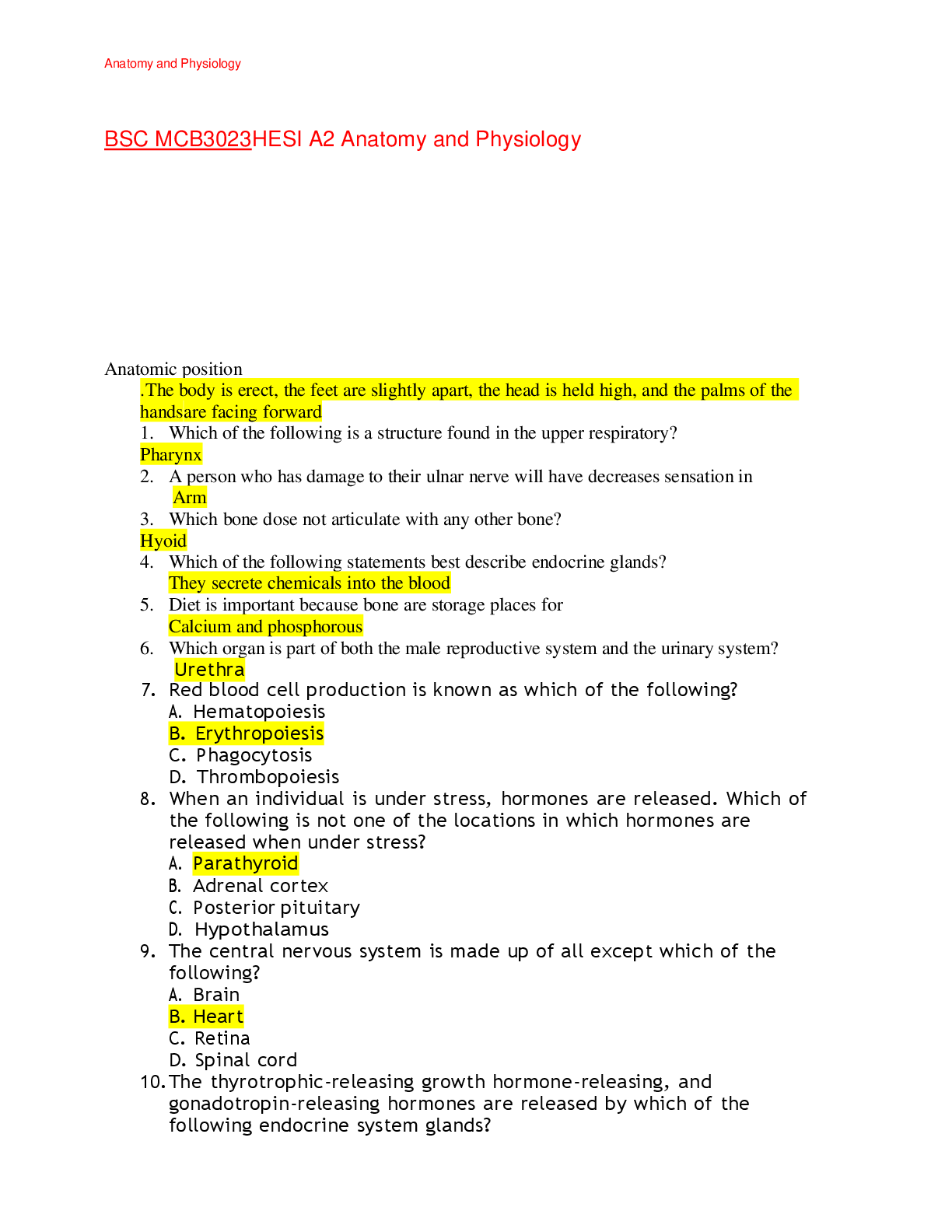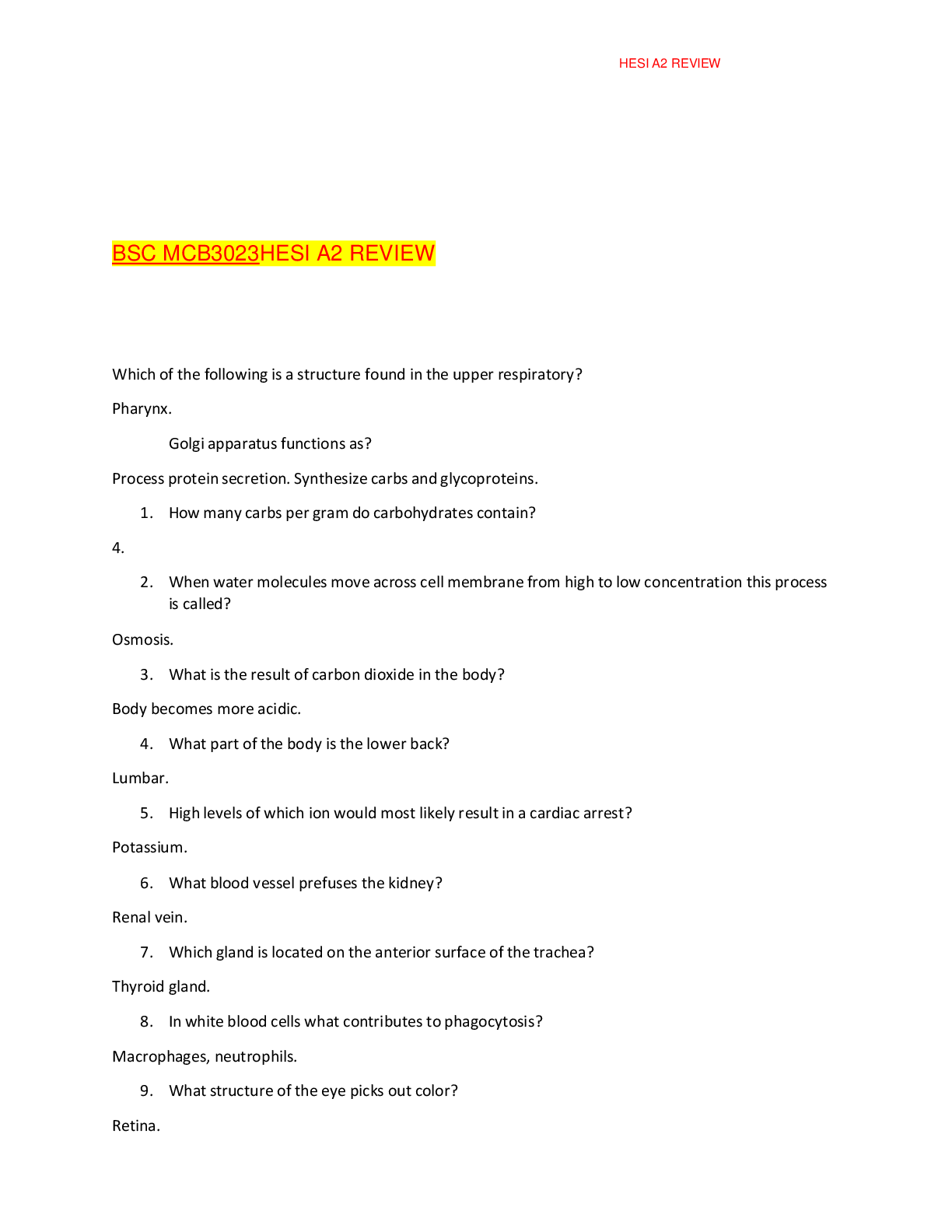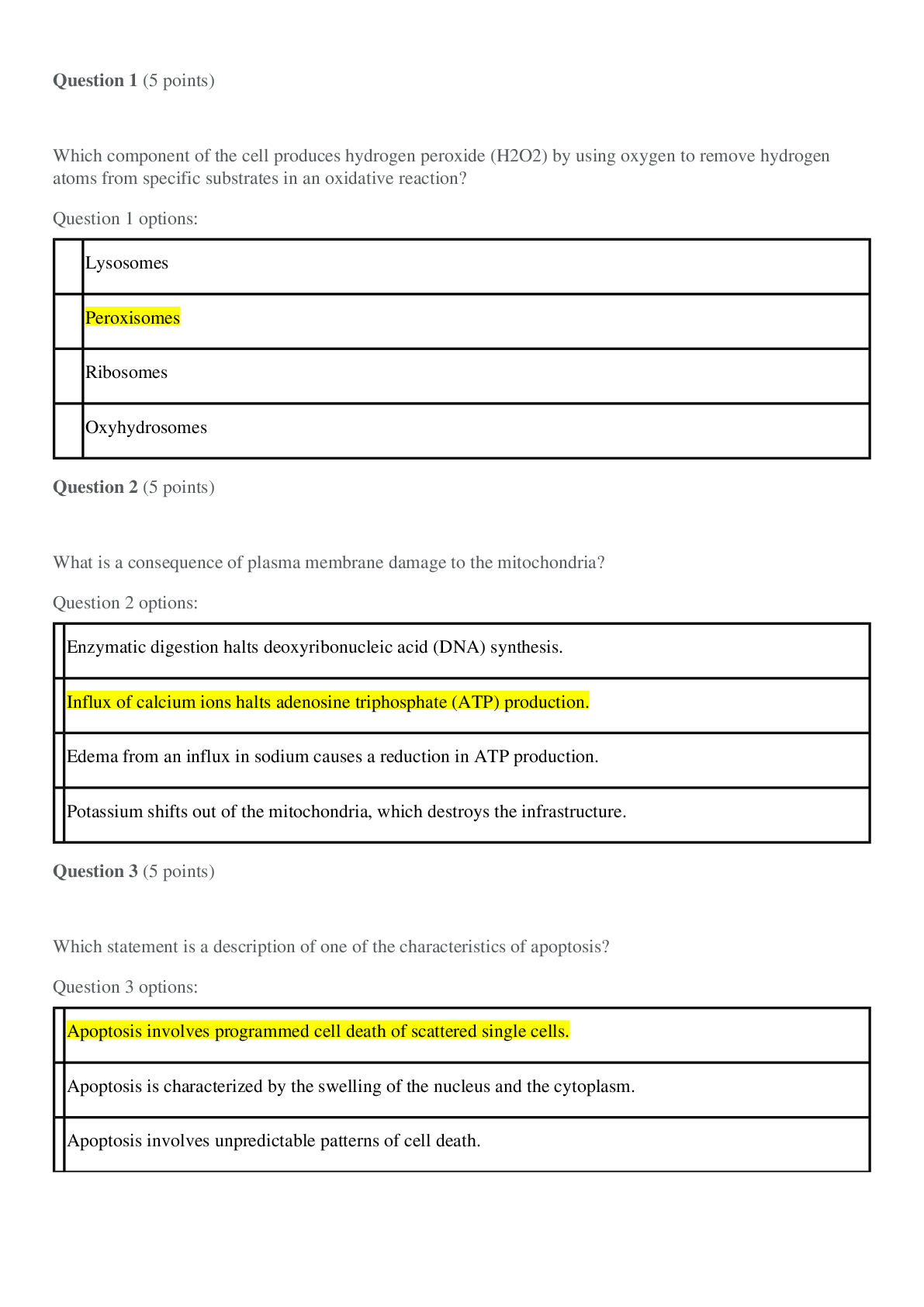
Which component of the cell produces hydrogen peroxide (H2O2) by using oxygen to remove hydrogen
$ 20
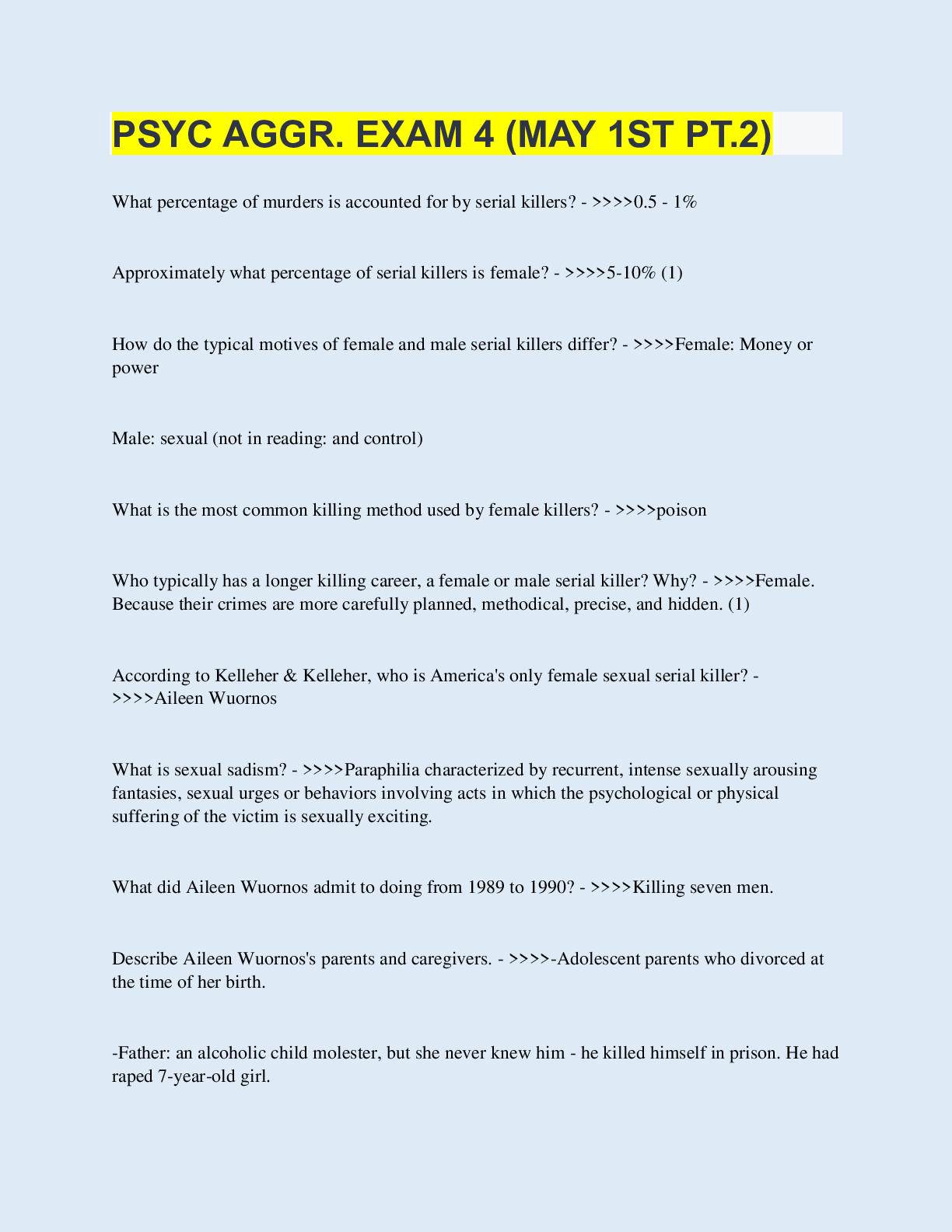
PSYC AGGR. EXAM 4 PT.2 | with 100% Correct Answers | Updated & Verified
$ 5
.png)
Supply Chain Game 2 Write-Ups (1) University of San Francisco BUS 308
$ 7
.png)
Final Exams Concepts
$ 7.5

Fundamentals of Nursing 9th Edition Bartlett Test Bank
$ 16.5
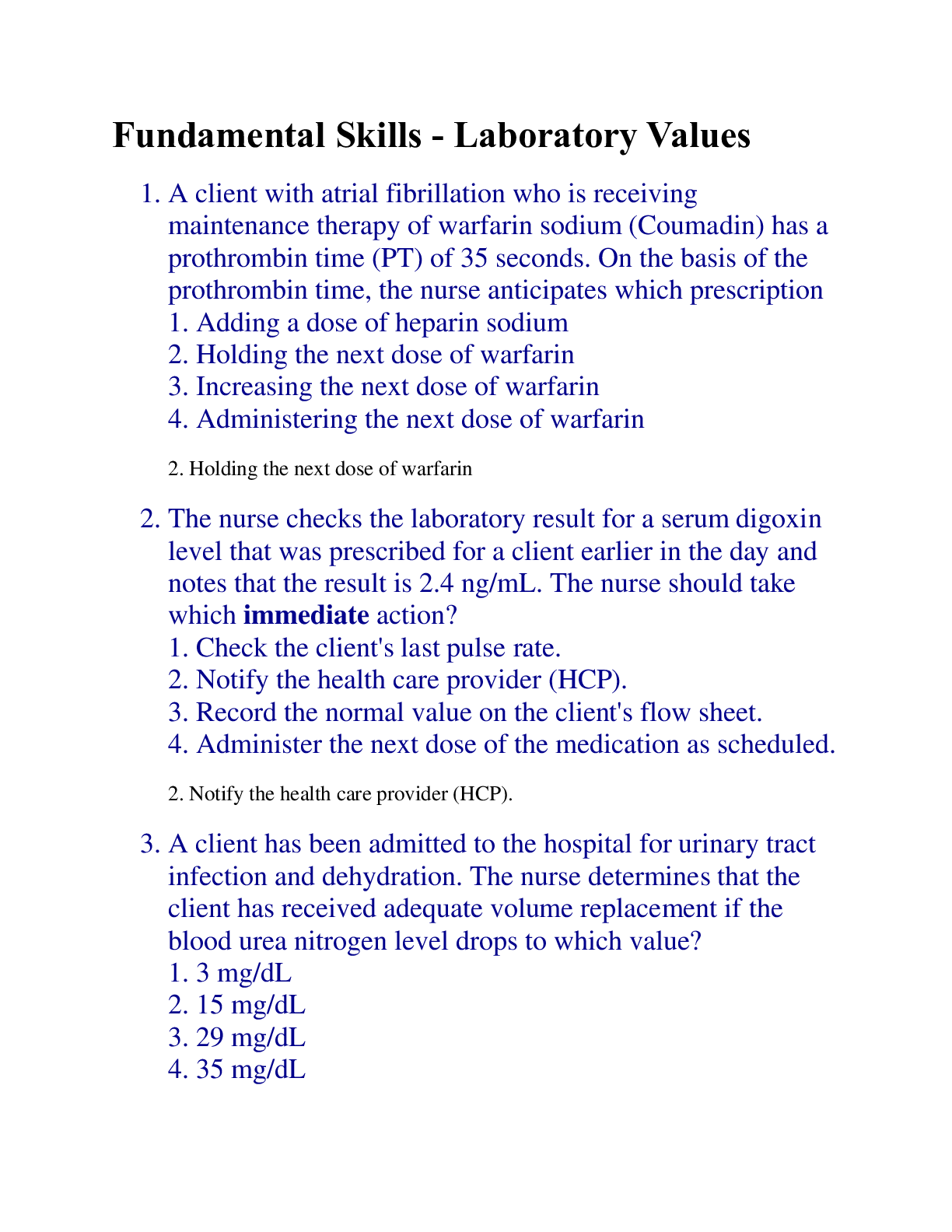
Fundamental Skills - Laboratory Values. 112 Questions and Answers. The most commonly tested materials.
$ 11

Mechanics Exam 2022/2023 WITH 100% CORRECT ANSWERS
$ 12
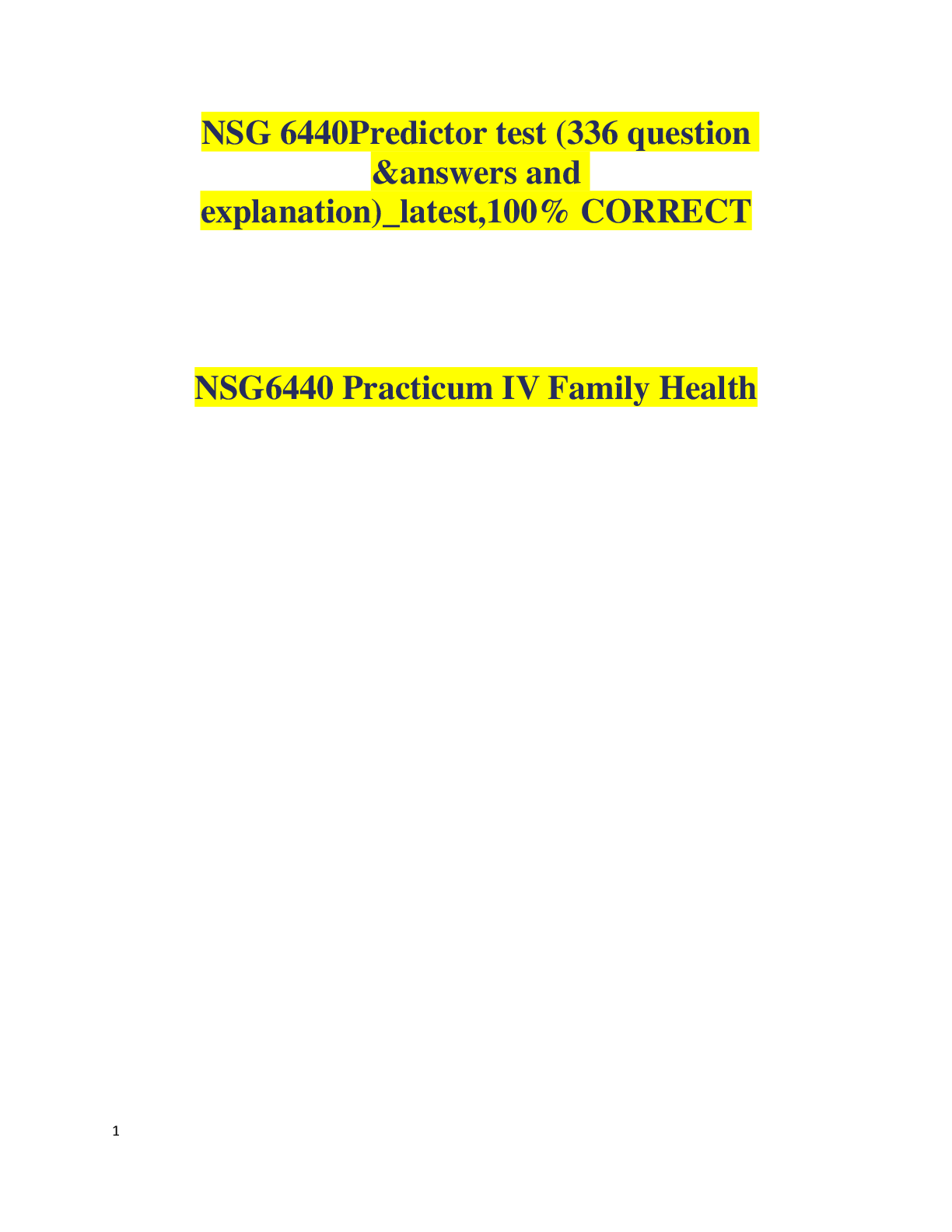
NSG 6440Predictor test (336 question &answers and explanation)_latest,100% CORRECT
$ 12.5
 (Master Study Guide 2022 Test Bank) Complete.png)
Summary The Texas Commission on Law Enforcement (TCOLE) (Master Study Guide 2022 Test Bank) Complete
$ 11.5
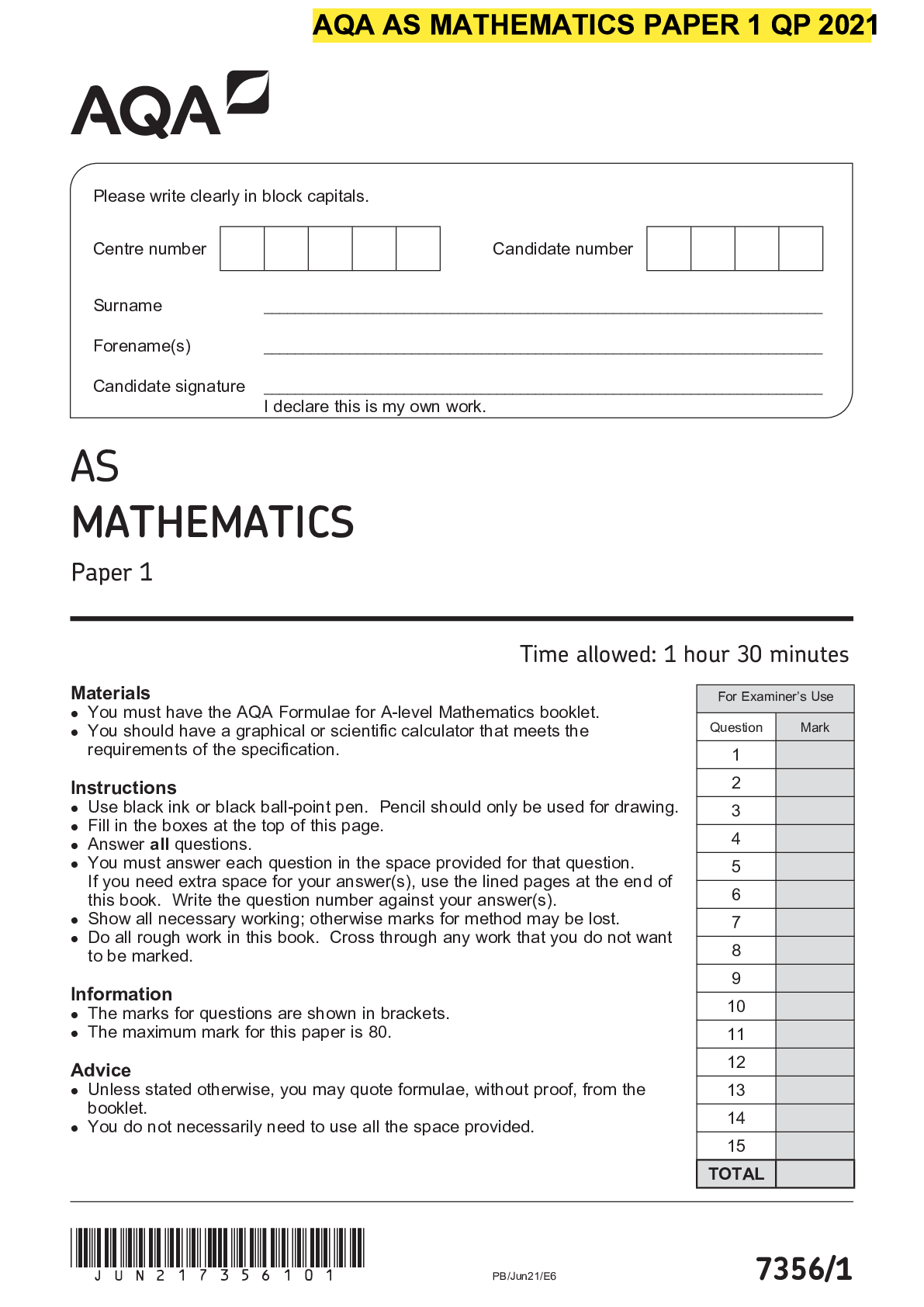
AQA AS MATHEMATICS PAPER 1 QP 2021
$ 6

CATEGORY 3 NON-CAB OPERATED TEST THIS'LL GET YOU AT LEAST A 94 ON THE TEST
$ 7
.png)
WGU C207 STUDY GUIDE MODULE 3 & 4 Already Passed
$ 10

eBook Introduction to Geopolitics 4th Edition By Colin Flint
$ 29
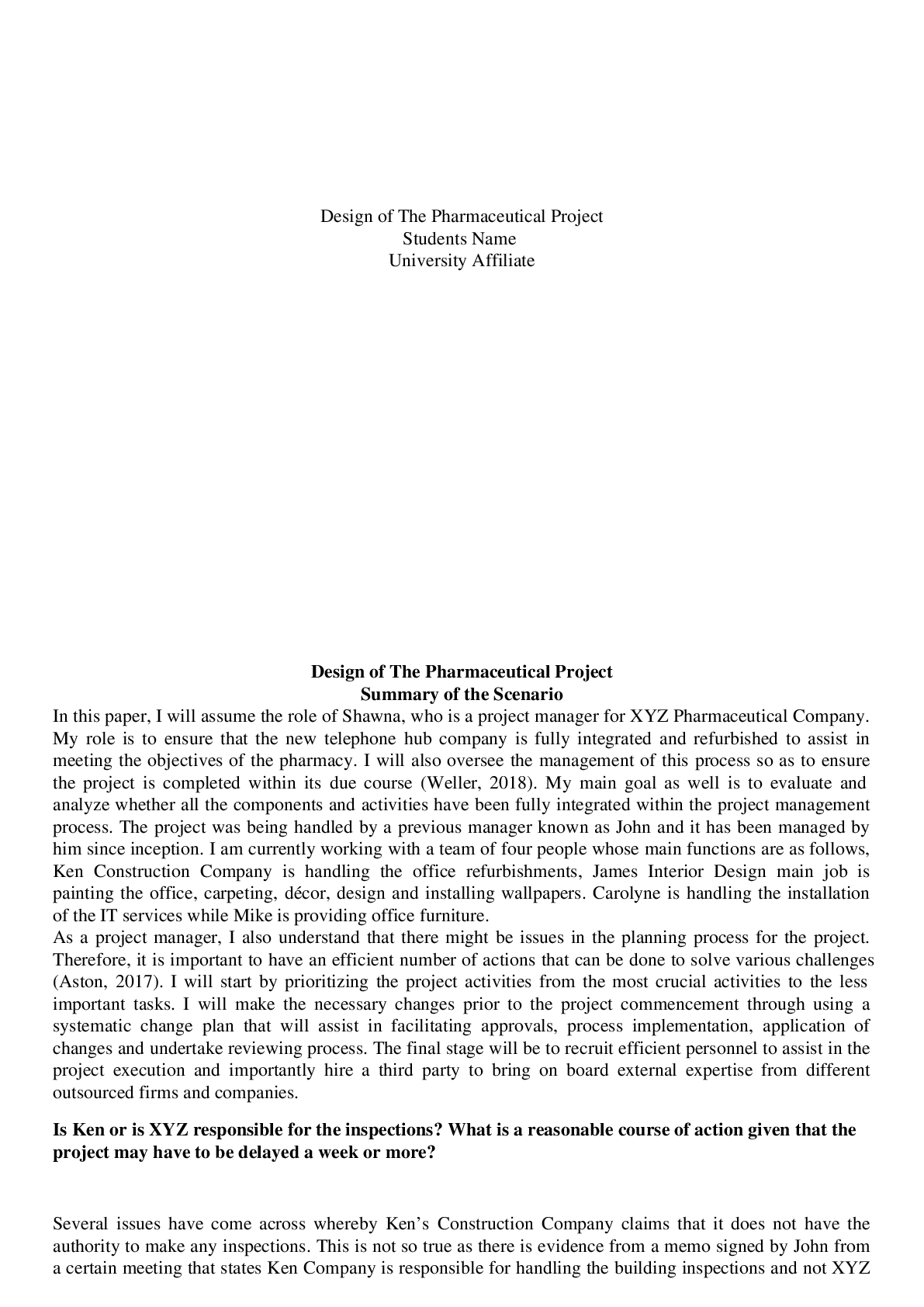
Design of the Pharmaceutical Project
$ 12.5
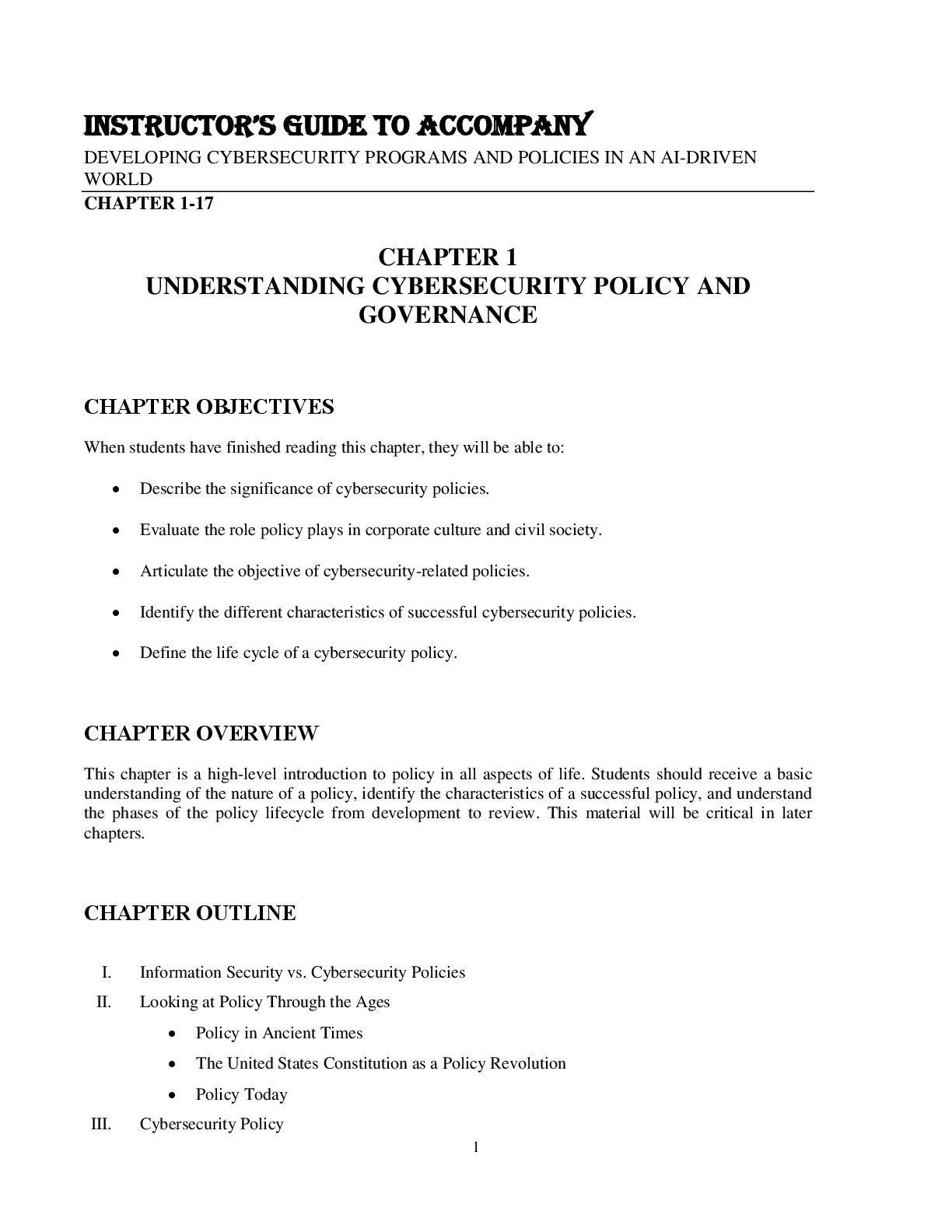
Solution Manual For Developing Cybersecurity Programs and Policies, 4th Edition By Omar Santos
$ 19
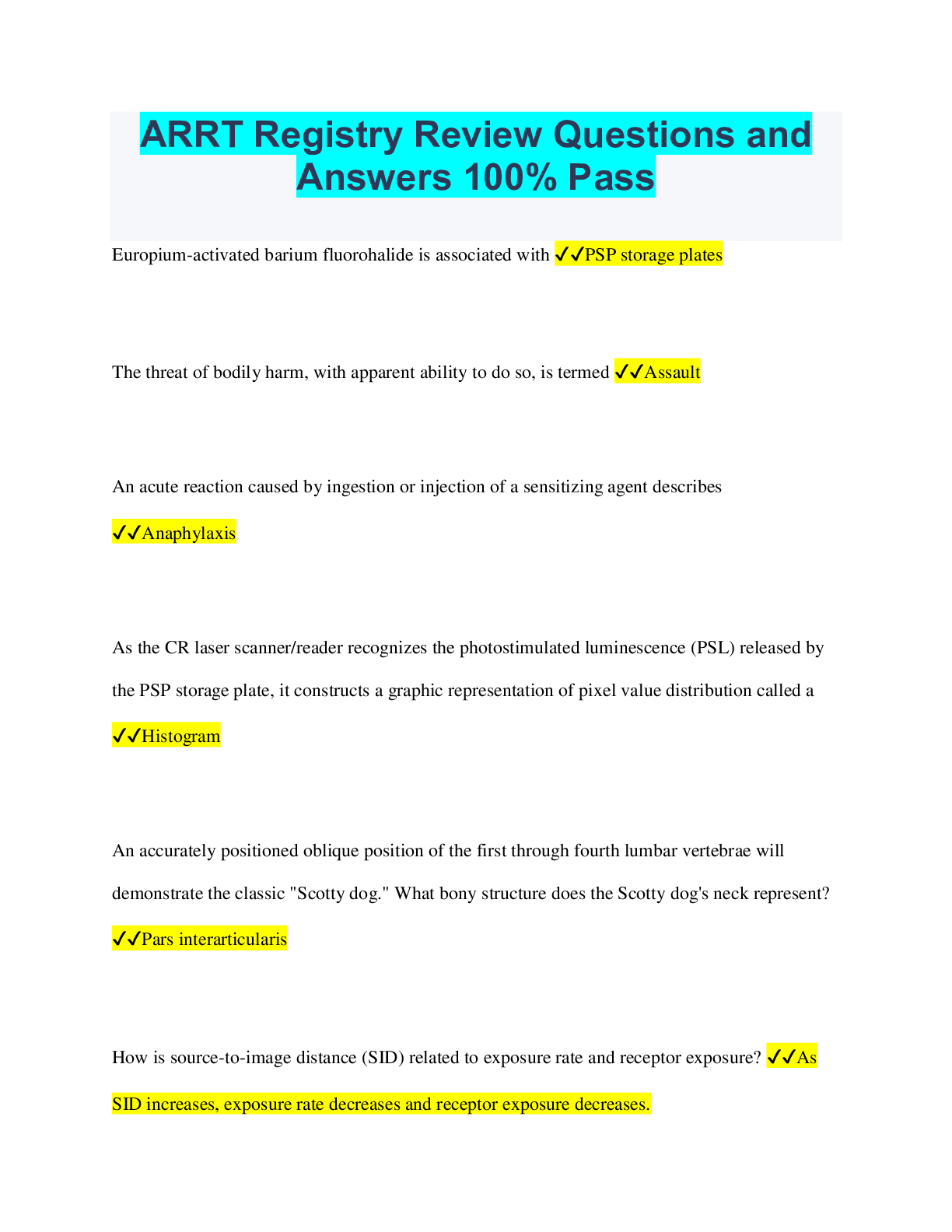
ARRT Registry Review Questions and Answers 100% Pass
$ 10
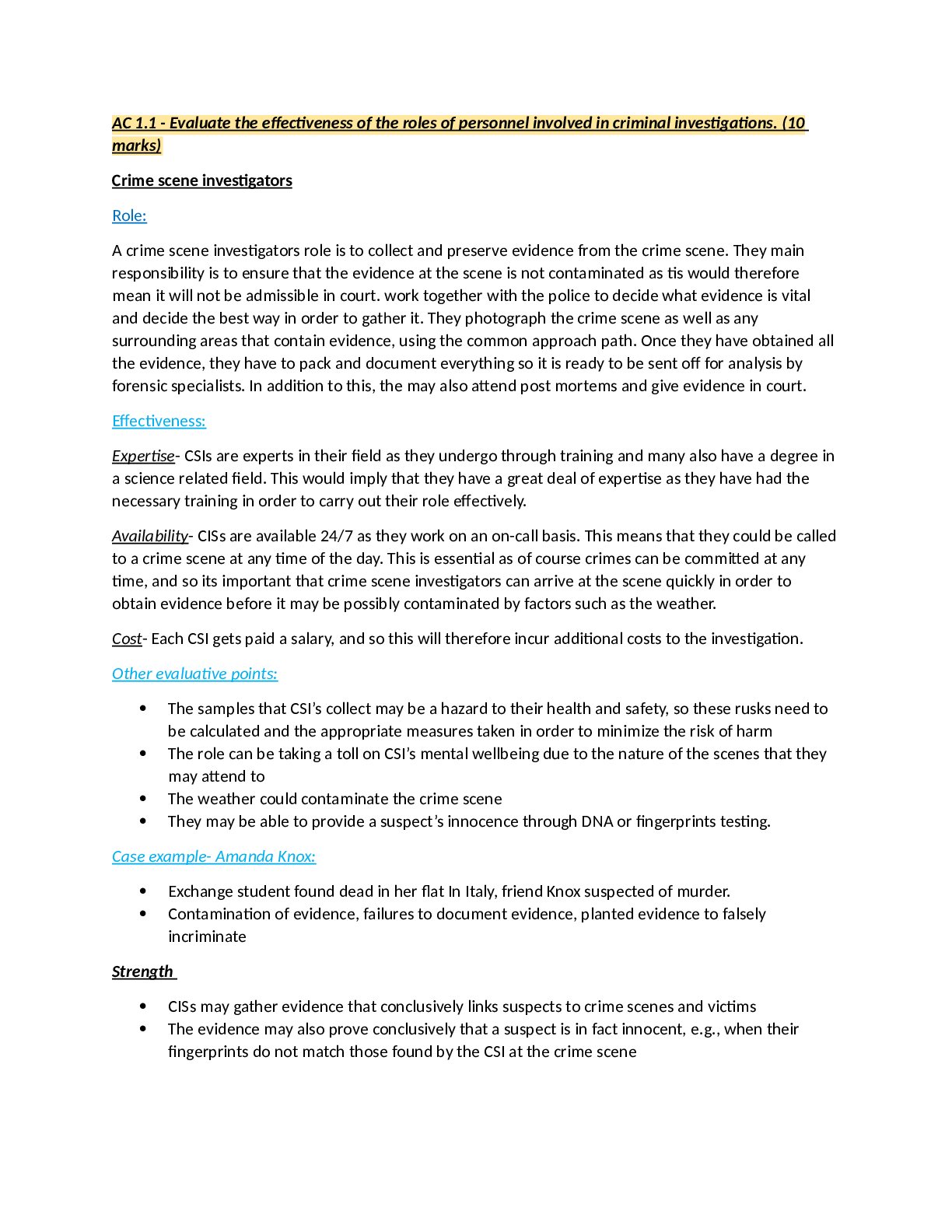
Criminology unit 3 notes latest with summary (100% well enlightened)
$ 20

BIOS 252 Unit 8 Final Exam Study Guide
$ 14

VATI RN Comprehensive Predictor 2019 Form A2. This document contains 180 Questions and Answers.
$ 15.5

A-level PSYCHOLOGY 7182/1 Paper 1 Introductory topics in psychology Mark scheme June 2021 Version: 1.0 Final Mark Scheme
$ 6.5

Walden University FPSY 6135 CYB670 Project 3: Lockdown Digital Forensics Investigation Report
$ 14

FISDAP MEDICAL EXAM INCLUSIVE OF MULTIPLE QUESTIONS WITH ANSWERS AND EXPLANATIONS NEW UPDATED GUIDE SOLUTION AND GRADED A
$ 14

Nursing Interventions & Clinical Skills, 7th Edition by Perry, Potter and Ostendorf TEST BANK
$ 19
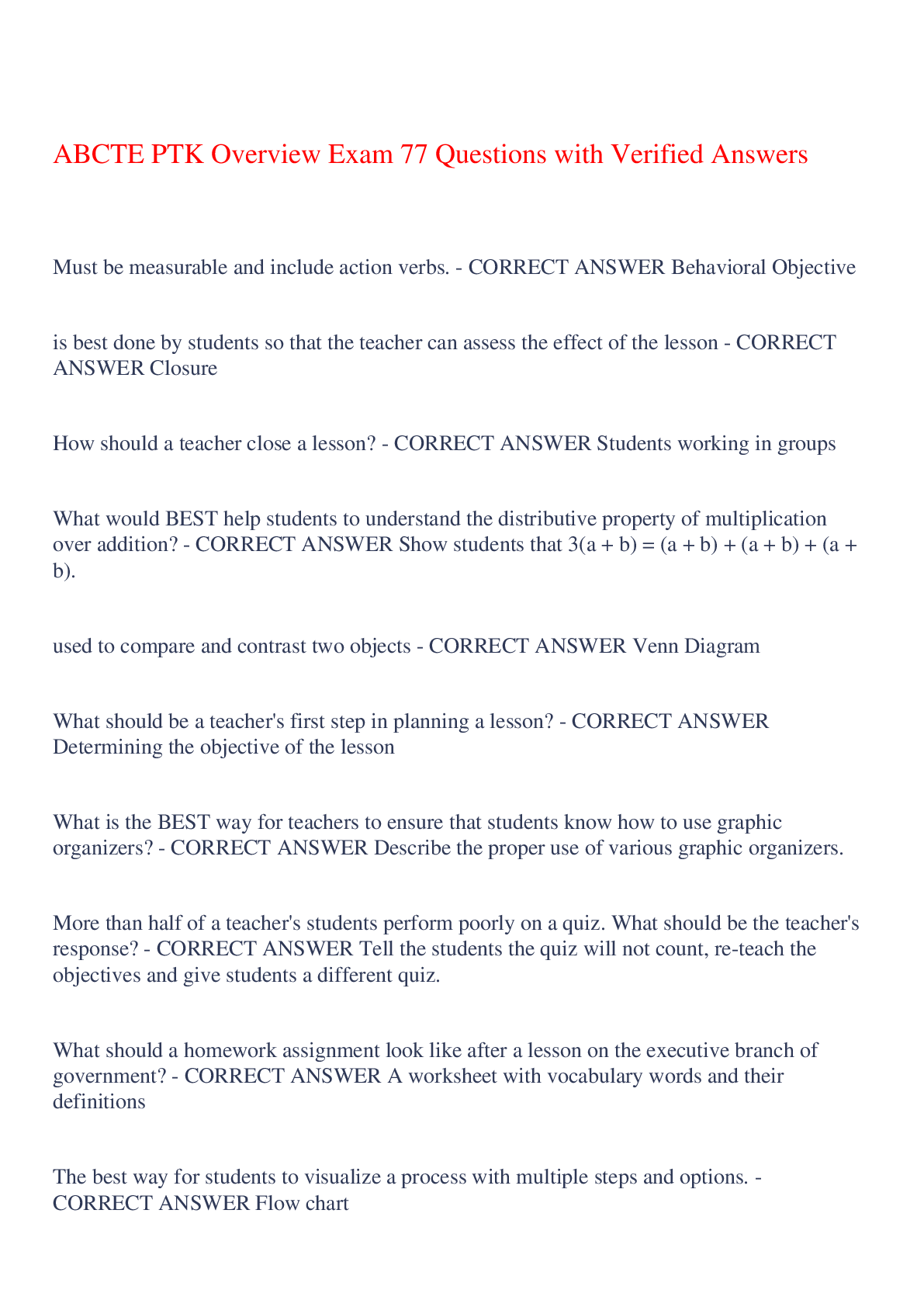
ABCTE PTK Overview Exam 77 Questions with Verified Answers,100% CORRECT


